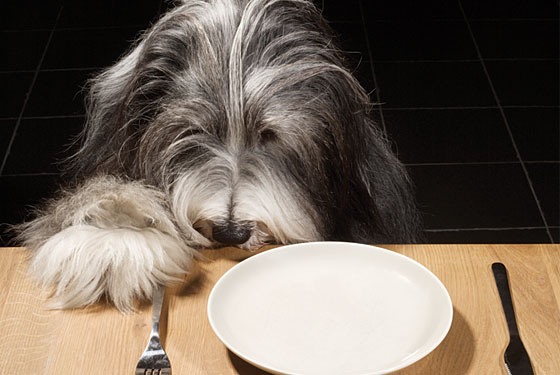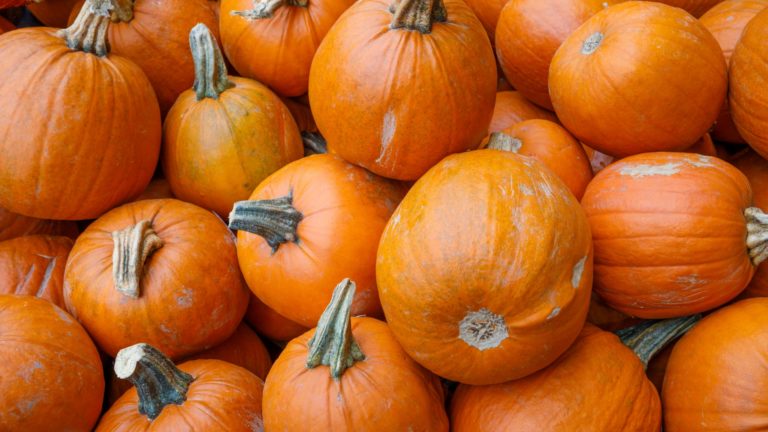What ingredients are in our dog’s food? Do you know what you are feeding your pets? What are our dogs eating? Check out the ingredient labels on your dog’s food. Do you really know what each ingredient is? The picture on the label and in the advertisements give us the impression that the food is fresh and wholesome. This article will serve as a guide so that you can better understand what is in processed commercial dog food. Kibble, most wet dog food, and many other commercial food products for dogs pose problems.
ANIMAL FAT: This is the derived from a process called “rendering.” The rendering process is a heating process performed at a rendering plant. Euthanized and slaughtered animals (including diseased dogs, cats, hamsters, horses, and other pets), road-kill, and even circus animals are required to have a special manner of disposal. They cannot simply be discarded into trash cans so they are gathered and sent to rendering plants. This is where the bodies are processed. At the rendering plants, the liquid ingredients that are typically used in commercial dog food are prepared using a special process. Basically, the bodies are boiled causing the fat to rise to the top. That fat product is called tallow and is named as “animal fat” on the food labels. BHA and BHT are preservatives used for animal fat.
MEAL: When we see the word “meal” in the ingredient list, it refers to the tissue of the animal including pulverized or burned ash skeletal material produced at rendering plants. This does not include hoof, blood, horn, hide or blood.
PLEASE BE AWARE THAT HALFWAY THROUGH THE FOLLOWING VIDEO THERE ARE GRAPHIC AND DISTURBING IMAGES DEPICTING DEAD ANIMALS BEING COLLECTED AND THEN PROCESSED AT A RENDERING PLANT USING A HIDDEN CAMERA.
*Although the video is old, this still continues here in the United States.
The images in the following link illustrate the types of protein sources that are used in producing commercial pet food. WARNING: The images from the following link are graphic.
One Pet Owner’s Rude Awakening
MEAT: Pet food manufacturers use vague terms deliberately. When the meat ingredient is not specifically named (i.e., beef, lamb…) then the manufacturer will list the ingredient as “meat” which is usually animals described above that are suitable for rendering. Simply put, “meat” in this context is defined from any mammal. By the way, FDA testing has identified phenobarbital in such meat product due to the presence of euthanized animals. Also, when an animal is in the slaughterhouse and there are infected areas, those parts are often cut off and sent for processing for pet food.
BY-PRODUCTS: The definition could differ from source to source so I chose to quote the following excerpt from the article, Pet Food: The Lowdown on Labels “proteins that have not been heat-processed (non-rendered) and may contain heads, feet, viscera and other animal parts not particularly appetizing.” Of course, there would be manure and fins when referring to fish.
ETHOXYQUIN, PROPYL GALLATE, PROPYLENE GLYCOL, TBHQ, BHA & BHT: The Department of Pathology, Nagoya City University Medical School in Japan is one of the many studies on these chemicals. I am naming them as a source because it could be assumed that they have no conflict of interest in their research. These chemicals are toxic to our dogs as well as humans. These are chemicals linked to serious illnesses including cancer. Much higher levels of these chemicals are permitted in dog food. BHT is a chemical related to BHA which is also used in dog food products. Ethoxyquin is a pesticide and also used as a preservative.
FOOD DYES: Many of the dyes are known to be carcinogenic.
CORN, SOY & WHEAT: Grains (especially corn) are very common allergens. for dogs. I have begged dog owners to change their dog’s food to a non-grain diet. Usually, I have found that skin issues disappear shortly after the transitioning away from grains. These ingredients do not address the nutritional needs of our dogs. They are used as fillers in order to keep the manufacturing costs down and to keep their profits high. There are NO benefits to those ingredients. These ingredients break down into sugars which have adverse effects of their me their sugar levels which is harmful to their metabolic system. Grain-free products usually add potatoes which are still carbohydrates which are a poor choice for dogs, but it is cheaper to produce that adding meat (even if it is an inferior quality of meat). Kibble is the cheapest type of food to produce and arguably the least healthy for several reasons.
VITAMINS & MINERALS: The extensive processing of dog food destroys virtually all the nutrients that our dogs need. Let me put it this way, if the dog food has more than 10 vitamins and minerals added, it is not a good sign. After baking, cooking and processing, most processed commercial dog food has no nutrients whatsoever. Therefore, the food needs to be “enriched” with vitamins and minerals. In other words, vitamins are added to the food. This is why there is a long list of vitamins and minerals that are on the ingredient labels. China has cornered the market on these vitamin premixes that are sprayed onto the dog food. China??? Yes. Pet food products can declare that they are MADE in the USA. They are only required to mix and cook the product in the USA in order to make this declaration. If the label on your dog food shows a list of vitamins, minerals, and names of chemicals, then it can be expected that a premix has been added. There might be one or two manufacturers that don’t source their vitamins from China. One is Barfworld.
I was able to negotiate a promotion for my blog community. Just call Barfworld at 1-866-282-2273 (BARF) and mention my website essentiallydogs.com and ask about my promotion. Feel free to share this with your family and friends.
They provide free telephone consultations so you can gain a better understanding about raw diets and products that are appropriate for your dog. They will guide you with portions for your dog’s size and weight as well making the transition from your dog’s current food. Barfworld also carries excellent supplements. At Barfworld the staff members are trustworthy and very competent. They are my choice for a nutritious diet for my dogs. They wolf it down like wild beasts! They LOVE it!!!
I hope that you will be able to look at an ingredient list with a better-informed perspective. As consumers, we deserve respect. The pet food industry needs to stop taking advantage of us. Please be aware that what I have written in this article does not describe every product in the pet food industry. The majority of commercially produced dog food engage in the above-mentioned practices, but there ARE some reputable companies out there. You just need to look closely at the products and study the labels in order to make your own assessments. To see my article about the food I give to my dogs, CLICK HERE.
Sources:
| Bren, Linda. “Pet Food: The Lowdown on Labels.” FDA Veterinarian Newsletter July/August 2001 Volume XVI, No IV. |
Essentiallydogs.com is an educational resource, and all information herein is strictly for educational purposes. It is not intended to diagnose, treat, prevent, or cure disease, nor is it meant to replace the (prescribed) veterinary treatment. Always inform your veterinarian or healthcare provider of any products that your pet is taking, including herbal remedies and supplements. Please do plenty of research so that you may equip yourself with the knowledge necessary to be an effective advocate for your dog’s well-being.









4 thoughts on “What’s REALLY in Dog Food?”
great article, thanks
Thank you so much, Yana! I’m happy to hear that you enjoyed it.
It’s nice that you’ve been satisfied with Barfworld dog food and are promoting it. But not everyone feels comfortable feeding raw food to their dog(s).And vets do not recommend it. At least the vets locally here do not. I have tried ZiwiPeak freeze dried food and my dogs would not eat it. I heard air dried is better and am considering that to add to their kibble. It’s too bad that the manufacturers of “non-kibble” dog foods are promoting their products as being “healthier” than kibble for dogs and their foods just might not be any better. I have had three dogs who have lived more than 16 years on Fromm kibble. And Fromm does not source from China. And no. I am not “promoting” Fromm.
I’m just saying that their food has worked for my dogs.
Hi Mary-
Thank you for visiting my blog and for your comment.
Unfortunately conventional vets do not study biologically appropriate feeding. Big food corporations donate and give great incentives to programs so those products are highly promoted. Holistic vets have studied biologically appropriate nutrition so you can get great information from a holistic vet.
The kibble foods are not legally permitted to use some of their ingredients, but there is no enforcement by the FDA. Those foods contain proteins that are rejects and dead, diseased, dying and down animals (the 4-Ds). It is a red flag if you see “meal” in the ingredient list. Good raw diets get their proteins by way of slaughter no by diseased animals. Furthermore, oats and rice are not biologically appropriate. Dogs don’t eat those things in nature. That is why they came out with “grain-free” alternatives. The problem with that is that the cheap fillers (grains) are replaced with legumes like lentils and chickpeas. Dogs are not designed to metabolize those ingredients. That is why there has been shown a link between dilated cardiomyopathy (DCM) and those ingredients. What they do is add supplements in order to make up for the issues caused by adding those ingredients.
I have never seen a kibble label without an extensive list of supplements. There needs to be supplements (mostly synthetic vitamins) in order to make up for the loss of the majority of nutrients that are lost during the extensive processing.
Products labeled as freeze dried is a better alternative to those labeled dehydrated. The reason is because freeze drying quickly allows the food to maintain its nutrients. That is why you will see fewer vitamins, minerals, and chemicals in it.
I highly suggest that you check out http://www.keepthetailnwagging.com for great ideas for raw food diets (and even lightly cooked if you don’t want raw. Please check out Susan Thixton’s website https://www.poisonedpets.com. You will be shocked at what goes on in the industry of commercial pet food.
With all animals there is nature vs nurture. DNA dictates a lot about lifespan, but feeding the healthiest food enhances DNA. I started decades ago on kibble then changed to raw and found a difference in my pets after the transition. In fact, I can tell if an adult dog is on a raw diet or a kibble diet simply by examining the quality of hair and the condition of the nails. I see the difference and I know what goes on in the industry. Consumers are truly not given a fighting chance when it comes to choosing the healthiest food. Big industry takes over.
Please check out those websites. I also have articles about kibble. Simply type in the word KIBBLE into the search bar.
Warmly.
Janie